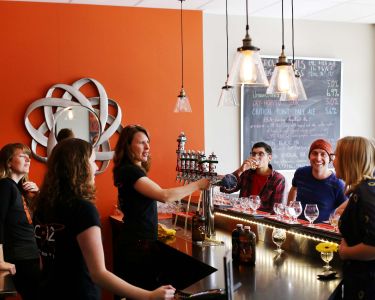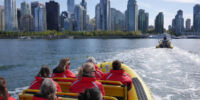
When you make the effort to hire the right person for the right job, you want to ensure they thrive—and stay—in your tourism organization. You already know the business case for hiring people with disabilities and you’ve set up your team for success. Once you’ve recruited people with disabilities, how do you make sure you retain them?
Here are three tips.
- Ask Employees What Will Help Them Succeed
“Once an employee is hired, whether they have a disability or not, they are welcomed as part of the Parq team,” says Jasmine Marchant, Director of Human Resources at Parq Vancouver. “It’s not about focusing on what they can’t do but rather keeping lines of communication open and asking them what they need to shine and perform at their best.”

Parq Vancouver has had considerable success in hiring and retaining people with disabilities—22 per cent of the property is staffed through their inclusive hiring program. “It’s working, it really is working,” says Marchant. “It’s not as hard as people might think. Your organization first needs to make a commitment to hiring people with different abilities, set a goal, and build relationships in your local community. It’s a great way to recruit a new group of employees into the workplace.”
Everyone doesn’t need to know which employees have disabilities, unless those individuals choose to share that information. “Ask the employee what they would like to communicate to the wider team,” advises Mahin Rashid, who is an accessibility and inclusion consultant representing the Presidents Group. A good way to phrase the question: “What information can we share with the team about your working style and what you need to be successful in this role?”
Then introduce the employee to your staff through an email, employee newsletter, or other regular means of internal communication. You could include a few lines about who they are, where they came from, and the best way to help them be successful.
The key? Do this introduction for everyone new who starts, not just people with disabilities. “When you start to change your hiring practices to be more inclusive, you not only better support your employees with disabilities, but you better support all your employees to be more successful,” Rashid notes.
- Check Back With Each Employee
Once the employee has started work, make sure they feel supported in adjusting to their position. If you’ve hired them through a recruitment agency, that agency may be available to provide support during the onboarding process, if needed. This can help make for a smooth transition early on, aiding with retention.
Also check back to ensure that any workplace accommodations (such as software) that the employee requested have been put into place.
“In my role as mentor to a young person with an invisible disability in our organization, I’ve found it important to check in regularly to ensure this employee is feeling supported by her team and manager,” says Marsha Walden, CEO at Destination BC and a member of the Presidents Group. “We want to ensure she is learning from a high-quality work experience with us and is able to perform at her best with the tools we’re providing.”
- Check Back With Management
After an employee has started, check in with that person’s manager to see if they need any extra support or training to help the employee succeed.
At Parq Vancouver, Marchant says that the property stakeholders and managers meet once a month to discuss ways to support the inclusive-employment program. They also offer training sessions for management on hiring people with diverse abilities.
“It’s important to do check-ins to make sure everyone is moving in the same direction,” she explains. Good communication can help ensure everyone feels supported and dispel myths associated with inclusive hiring. For example, some managers were initially concerned about how other employees were going to react when a person with a visible disability was hired for a position in food and beverage. By talking through concerns in an open environment, the organization could address them and provide support as needed. The result was positive for the entire team.
“The team was so open and welcoming,” she recalls. “They were really proud that we had hired the new employee and given him an opportunity. They became invested in his progress and wanted to help him succeed, and they all supported each other as a team. Also, the family was so appreciative that their son had a job and it gave him meaning. It was a very positive experience, and it’s happened over and over with new hires in our inclusive employment program.”
For more tips on inclusive hiring, see the Presidents Group website.





